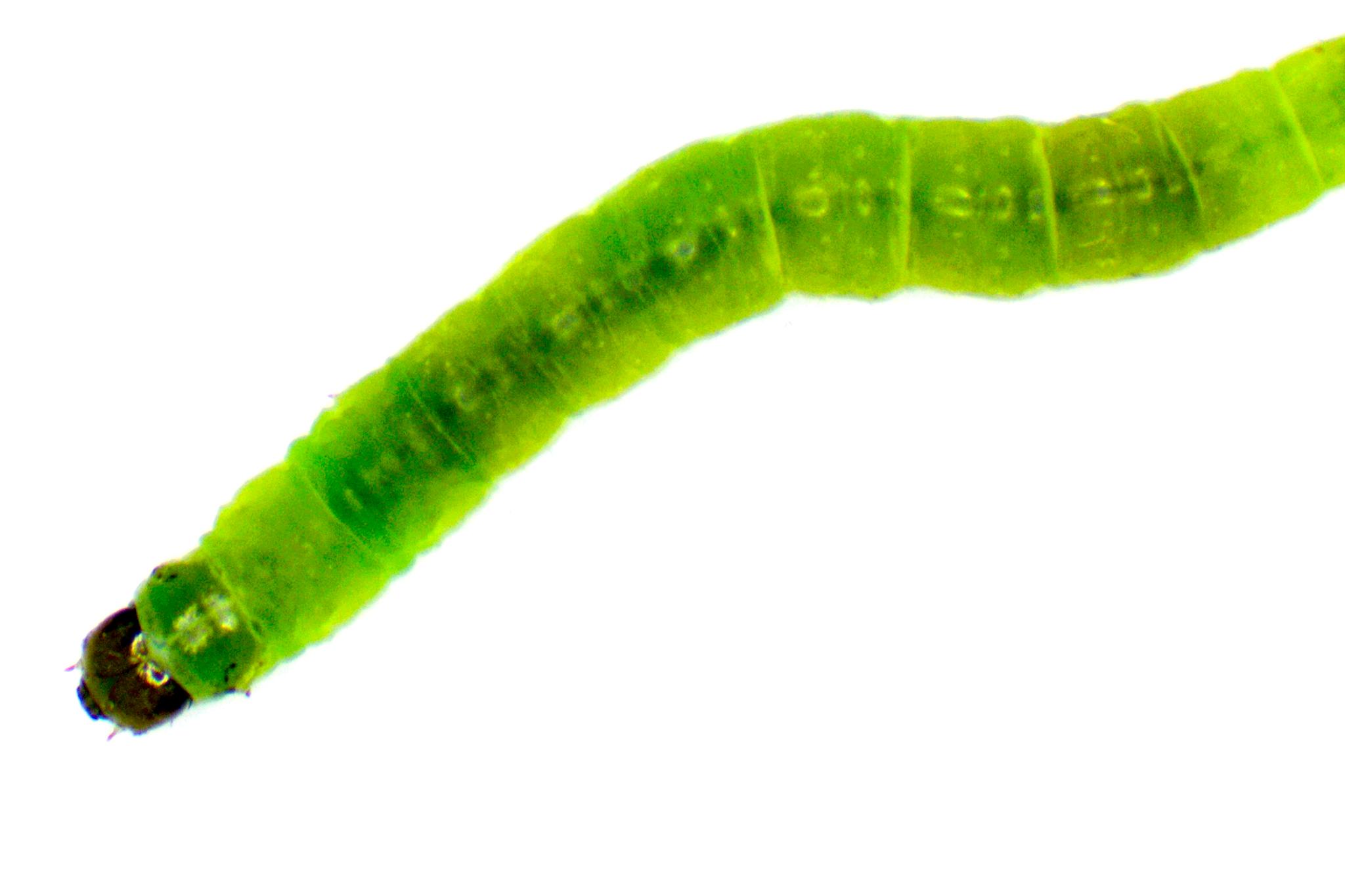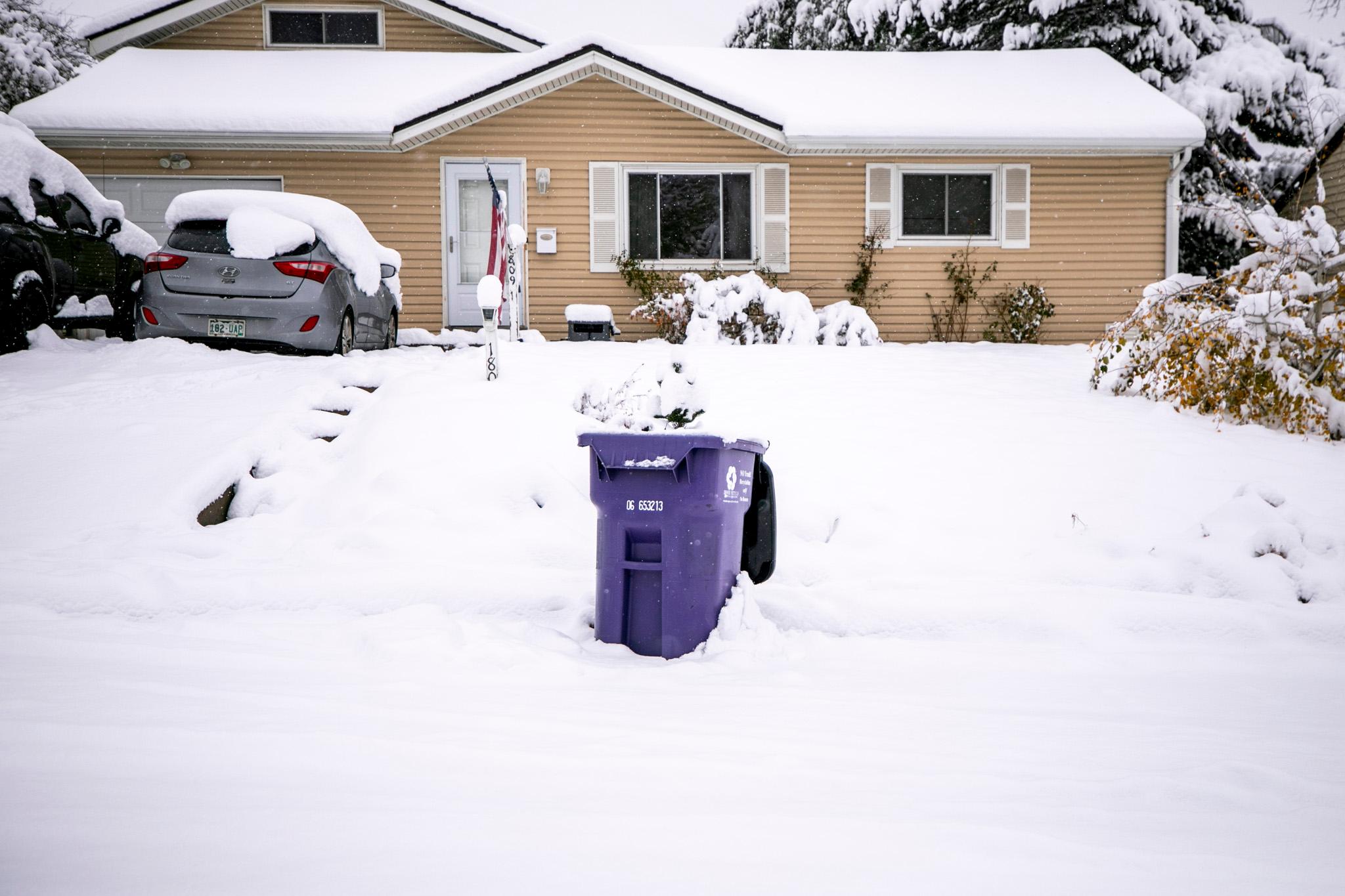Outside Denverite headquarters in North Capitol Hill, silky webbing stretches between trees. Journalists report tiny, green, wormlike creatures slinking down their necks, dangling from the ceiling, rappelling onto desks and crawling across coworkers' unsuspecting faces on computer monitors mid-Zoom meetings.
Outside, the creatures' leaf crunching is audible.
North Capitol Hill is not alone. Readers have spied these wrigglers in the Golden Triangle, Downtown and Civic Center Park, too.
In a week when Miller moths have invaded homes and offices, these new-to-us critters have joined the insect onslaught, and we had questions.
Here's one: Is this the apocalypse?
Not so, according to Shiran Hershcovich, Butterfly Pavilion's lepidopterist (that is, butterflies and moths) manager, who encouraged us to feel optimistic that our ecosystem is thriving. (She was less certain about the apocalyptic implication of the murder of crows that surrounded our building in the winter, which she described as "ominous," but that's a different story.)
We should be especially glad to see insects in this invertebrate-unfriendly world of high-speed cars, glass windows and bright lights that confuse moths into thinking they're navigating toward the stars when they're just headbutting our reading lamps.
Lepidopterists explore the lives of butterflies and moths. Hershcovich got her start studying molecular biology and eventually immersed herself in the world of invertebrates.

"I have now chosen to specialize in butterflies because of the power that they have as an entry point to invertebrate conservation," she said. "It is much harder to get people engaged if I was doing roaches. Butterflies are great for that."
One of the things she loves about studying invertebrates is that there is so much we don't know about them.
"Most insects around us are deeply understudied," Hershcovich said. "I always call invertebrate science one of the last frontiers in science because we continue to even describe hundreds of new species of insects every year. So we're just starting to get to know them."
We sent her photos of the wormlike things invading the office.
Based on the photos, she first guessed they were cabbage lopers, a type of caterpillar.
"It is the essentially juvenile stage of a pretty unremarkable looking grey moth," she said. "But in the caterpillar stage, in addition to being adorable, they are most known for eating crop plants like cabbage, kale, broccoli, everything that is in this general group of plants."
But then our scientific investigation went a little deeper, and she ruled that out.
Cabbage lopers are normally located on ground-level plants and not trees. So would there really be so many hanging from the tree canopy? After discussing the silk the caterpillars were shooting out all over the tree canopy, Hershcovich changed her mind and settled on the idea that these are likely leafrollers, caterpillars found across Colorado that build webs and wander off during the day to eat.
Are these creatures safe?
"The good news is that they are not dangerous," Hershcovich explained. "They're not venomous. They're not poisonous. They cannot harm you. So they're just one of our friendly backyard neighbors."
And the webbing?
The caterpillars draw silk from a part of their body near their mouths called spinnerets. They produce the silk from there and then climb it.

The caterpillars, who appear to have dozens of legs, only have six with joints. The fake legs just stick out and help balance them as they climb.
"Caterpillars are often really tiny, and they depend on very specific plants," she said. "So attaching themselves to their food plants, even in high-wind situations and storms, is essential to their survival. These fake legs help them attach really strongly to plants and help them climb and help them defend themselves from predators."
Leaving caterpillars inside might not be the best idea.
Caterpillars are prolific breeders. They lay upwards of a thousand eggs in their lifetime. Since they're so easy to catch and eat, breeding is the species' prime survival strategy. Nobody wants thousands of caterpillars hatching from eggs inside.
Their chances of surviving for long inside are low, as they depend on leafy greens for food.
"They cannot last a very long time without food," she said. "Caterpillars are pretty much eating machines. I always like to joke that the book 'A Very Hungry Caterpillar' is a work of nonfiction. Caterpillars need a constant food source to grow, survive, complete their lifecycle."
For most of their lifespans, leafrollers are either eggs or caterpillars. Eventually, they have a short run as moths, a few weeks long at most, in late spring and early summer.
When it comes to eating, leafrollers are "generalists," she said. They eat fruit trees and some ornamentals, along with other plants.

"They have a way of detecting the world that is not accessible to us humans," Hershcovich said. "So they detect scents and pheromones to find their host plants and food."
Through echolocation, they emit soundwaves and use them to detect the distance between where they are and any given object.
"They are equipped to navigate really complex systems and do really powerful things," Hershcovich said. "And they continue to use technologies that are pretty new to humans. Moths have extremely sophisticated echolocation and radar use that is still kind of new to humanity. And moths have been using it not for thousands but millions of years."
Unlike Miller moths, who are dutiful pollinators, the leafrollers don't do as much in the way of pollination. But they serve a critical role in the ecosystem, and Hershcovich doesn't think we should kill them.
"The simplest thing to do would be to move them outside and just let them do their thing," she said. "Once they are outside in the ecosystem, they are able to fuel life as we know it, especially now in the springtime, as we see insects coming out.
"We also see an abundance of other life coming out," she continued. "Nests are full of baby birds, which require plenty of fuel that they find in insects that are emerging at this time of year. They will feed all sorts of wildlife that we'd love to see in our backyards and our parks and our natural spaces."

The same is true for bees, butterflies and other insects.
"Invertebrates as a whole provide ecosystem services that are not only valued at billions of dollars annually, but also are critical to our survival," she said. "They recycle nutrients in our soil. They propagate plants as pollinators, and they even contribute to the very oxygen that we breathe. So they're quite important pieces of our giant Earth puzzle."
And the world of caterpillars is a puzzle.
"There's still so many things that we don't know," Hershcovich said. "We're still trying to understand very basic things about insects."
What do they eat? Where do they go? What's their full lifecycle? Are they sentient? Do they have a sense of community?
Hershcovich wants to empower Denverites to become community scientists and collaborate on building our knowledge of invertebrates. The Butterfly Pavilion is recruiting butterfly monitors and community scientists to help with the research.
"There's this curiosity that is building up in people about the natural world around them," Hershcovich said. "It can be used to expand our knowledge of butterflies and moths and how they respond to a changing climate and a changing space around them. That way we can plan to better support them in the future."













